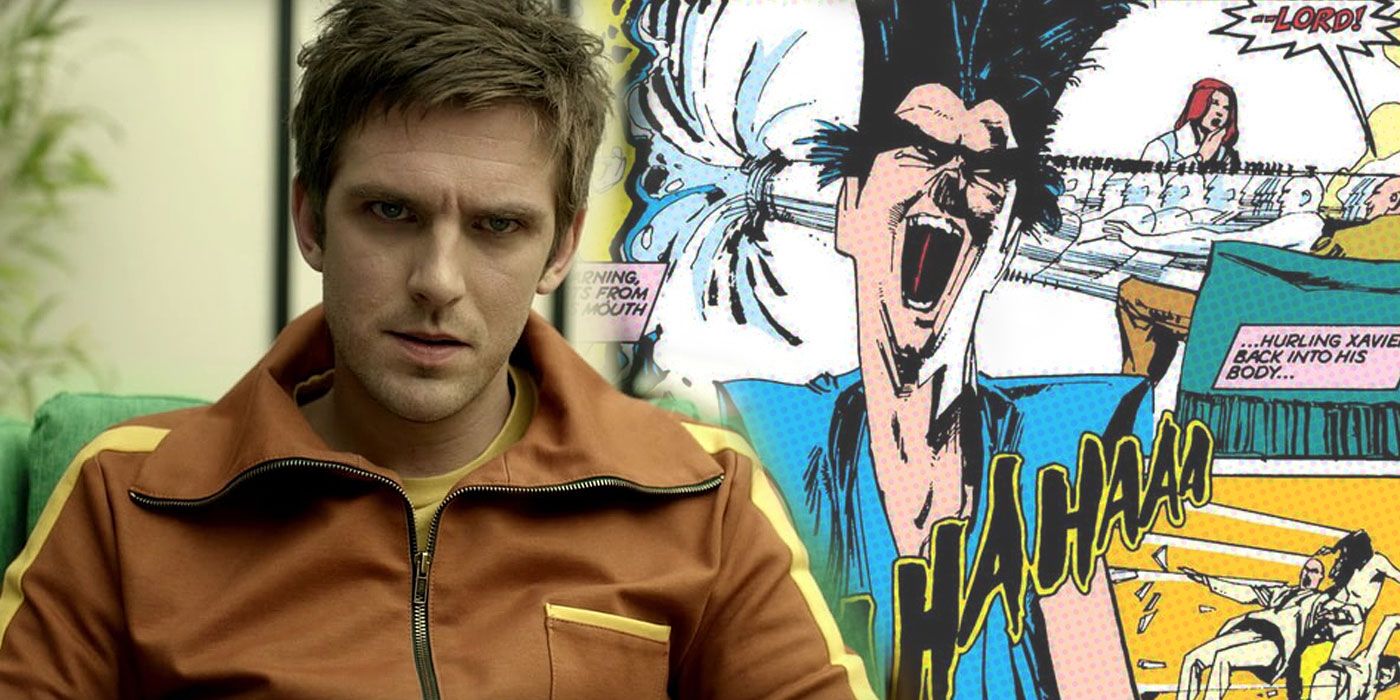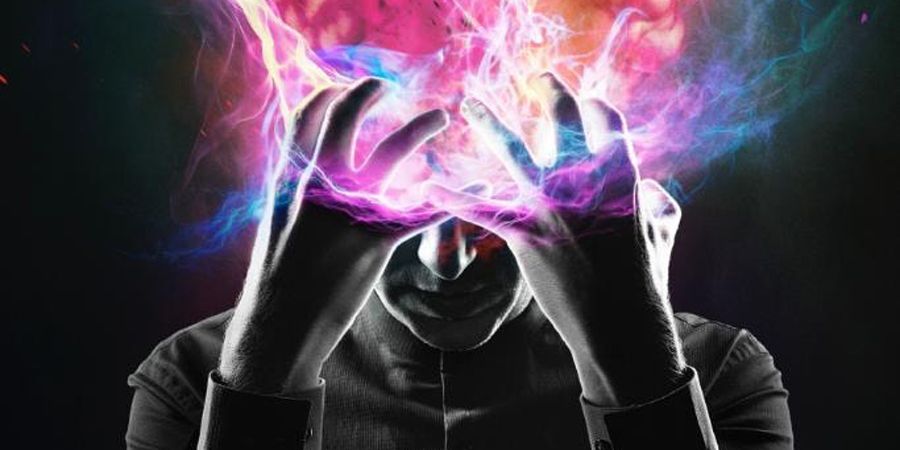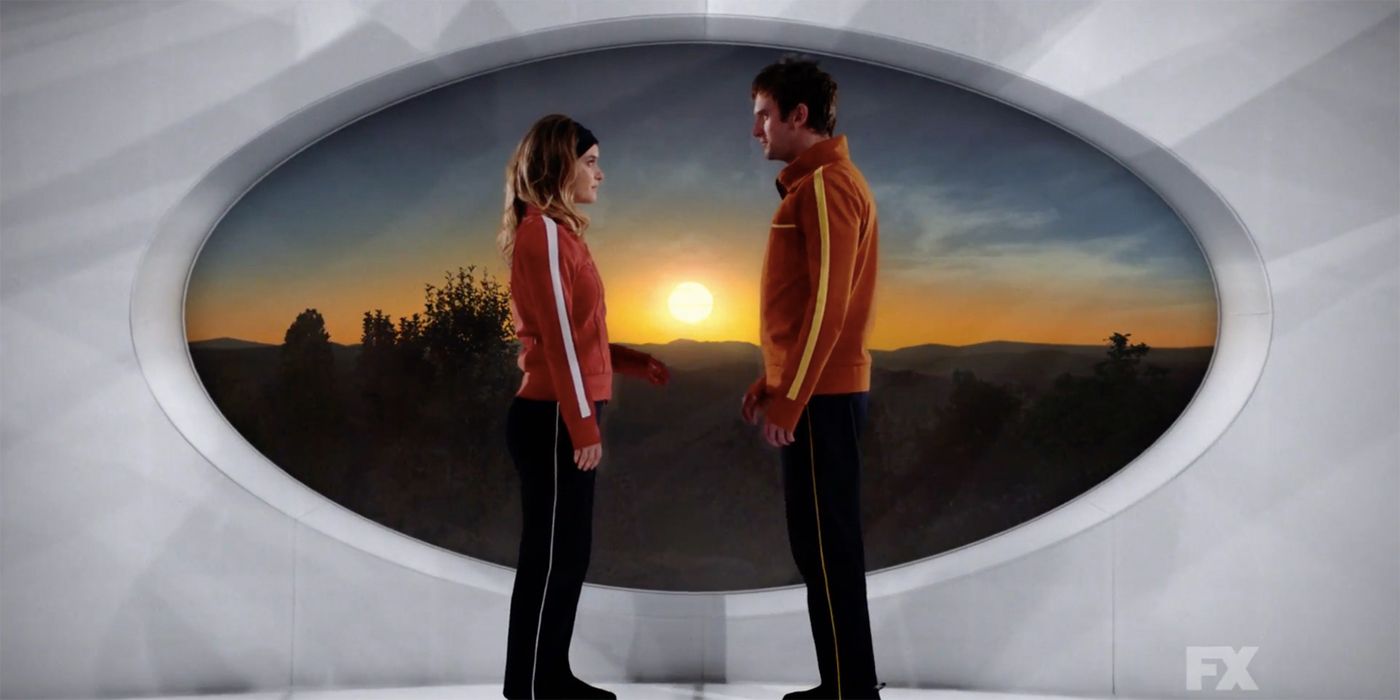Three decades after the legendary, groundbreaking comic book artist Bill Sienkiewicz co-created one of the most unusual members of the extended X-Men universe, “Legion” is coming to television with a similarly striking visual dynamic, and the artist couldn’t be prouder.
In a 1985 issue of "The New Mutants," Sienkiewicz, with writer Chris Claremont, introduced David Haller, the then-unknown son of Professor Charles Xavier whose prodigious array of mutant mind-powers was offset by extreme mental conditions, including severe dissociative identity disorder. The character, known as Legion, also featured a design that signaled Sienkiewicz’s increasingly expressionistic, graphically adventurous evolution which would characterize the bulk of his latter career.
RELATED: Legion Debuts Stunning Cast Portraits, Hi-Res Stills from Premiere
The David Haller of FX’s new series “Legion” – created by acclaimed “Fargo” writer/producer/director Noah Hawley and set in a self-contained parallel world rather than the established big-screen continuity of the “X-Men” films – appears in the less radical form of actor Dan Stevens. There are hints, though, that he may sport Legion’s famously sky-high hair in some form, and the series is as visually adventurous as Sienkiewicz’s memorable, game-changing artwork, in its own way.
While attending the series’ premiere in West Hollywood, Sienkiewicz met with CBR to recall the creation of the character and that particularly fertile creative period in the 80s and 90s, as well as to reveal his latest project with an A-list comics writer, the influence of graphic art beyond the comics medium and a very special request he honored from another comics legend, Jim Aparo.
CBR: What’s best about this show is that it had such a distinctive visual style, which is exactly what was happening in "New Mutants" when you created Legion?
Bill Sienkiewicz: Yeah, I think it’s called stereotyping. It is kind of exciting to see that, because I’ve always felt that what Chris and I were trying to do, and certainly what I was trying to do, I always felt like my own contribution to comics were always sort of an anomaly. They let me play in the sandbox with all the toys.
But when it came to having a character or a series of characters that were defined as canon, I never felt that my work qualified for that. There were the Spider-Mans, and the Iron Mans, and everything else. I was perfectly content to sort of be the oddball. And the fact that that’s being embraced, I find that quite gratifying.
What was going through your mind, creatively, when you first created the character of Legion, when you were visually designing the character. It was such an unusual creation at the time.
At the time, when I came up with the visuals for Legion, I wanted to sort of come up with a character that looked sort of deceptively non-threatening, which is one of the things I always loved about the New Mutants in general.
As far as the other New Mutants are concerned, there was one who was very, very sort of adorable little blonde girl who could unleash the hounds of hell [Magik]. To me, that struck as a perfect metaphor for what going through puberty is, and teenage years, and sort of coming to grips with the young part of us, and the potential, and all these dark absolutes that we feel.
I wanted to encapsulate a visual that could do that. I wanted him non-threatening, I also wanted him weird, and I also wanted him to be off-kilter enough so that he could potentially be incredibly dangerous as well. So, here we are.
Thirty years later, your work with Marvel, the X-Men titles in particular, has stood the test of time, still talked about and being mined by Hollywood. What does it mean to you to know that you actually had a moment like that in comics that has lingered for so long?
I’m almost still processing that, because I’m so used to, after being in this business for like 35 years and doing it, all of the things that I wanted to try that were met with, you can’t do that in comics, from painted comics, to collage, to bringing in all kinds of other art forms, from fashion, to sculpture, and putting it into a medium that had just been about people in tights, and within little [inaudible 3:22] All of the arguments, and the fights, and the sort of feelings, being misunderstood, all the things in some respects that I think as the character’s going through, in terms of the Mutant universe, I think in some respects, it’s still something I’m processing. I am enjoying it.
We’re hearing that your “Demon Bear” storyline might be adapted into a New Mutants film?
Yeah. I’m hearing that as well. I’m hearing that as well, yeah. [Winks broadly and zips his lips]
Not long ago I was at an exhibit at the Academy of Motion Picture Arts & Sciences of movie poster art by Bob Peak, the great artist behind posters for “My Fair Lady,” “Camelot,” ”Superman: The Movie,” “Star Trek: The Motion Picture,” “Apocalypse Now,” so many greats, and I thought I saw a connection with your style and his. And then suddenly I saw some of the items on display were from your collection. You own them!
I was a big fan. I always loved comic books as a kid, wanted to do them, but I also fell in love with art. I loved illustration, and painting, and fine art. So one of the things that I tried to do when I started working professionally in comic books – and comics were not just a boys’ club, but they were a little bit of a closed house, in terms of what was allowed. So when I came in, I said, I want to try doing women who look like fashion drawings, like from the newspapers, long and like 18 heads tall, with just sort of this wisp of hair in single stroke, this rendering. I wanted to bring in sculpture, collage, all the things that I had fallen in love with in terms of fine art.
I thought comics were missing a great opportunity to use that as a vocabulary. I caught a lot of heat for it and a lot of ribbing and stuff. But as long as they leave me alone and let me alone to kind of run with it, I was happy. So to be able to do well enough, and to meet a lot of my illustration idols, and do well enough financially to be able to afford iconic pieces by some of my heroes, was also a real pleasure.
What are you working on right now?
I’m actually working on a series with Kelly Sue DeConnick. It’s called “Parisian White.” It’s a create-your-own series that we’re doing with Image, and it takes place in an alternate 1920s Paris, involving murder, and art, and race relations. I’m really excited about it. She’s one of the best writers I think I’ve read, so to be able to work with her -- we’re both really excited to see where we could take this crazy medium we love.
I have a super-nerdy question of personal interest: before he passed away, you frequently inked the pencils Jim Aparo, one of the all-time greats and an iconic Batman artist. What was that experience like?
I love Jim Aparo. I’ve been really fortunate to have inked or worked on finishes over many of my childhood idols, like John Buscema, Sal Buscema, Jim Aparo, Carmine Infantino -- all of the artists that I grew up reading. I’m in the business for a couple of years, and I’m feeling like a professional, and they ask me to work over Aparo. All of a sudden, I’m that eight-year-old, 12-year-old kid again going, “Oh, my God!”
I remember, at the tail end of his career and the end of his life, DC would call me up and they’d say, “Can you work on his figures? Can you fix some of his drawings?” Because he was getting older, he started to lose some of the finesse. I never met him face to face, but we had a really wonderful conversation, and we talked about everything.
At the end of the conversation, he said, “I have one favor to ask,” and I said, “Sure, you name it.” He goes, “Stop fucking with my faces.” And I was like, “Okay, you got it.” I went to the editors. I said, “Look, artist prerogative and respect. You want me to sort of fix what he’s not doing, and I have to respect what he wants. He says, ‘Ink it how I drew it.’”
He was perfectly willing to embrace the fact that his abilities had declined because of his age. But the editors were like, “What can we do now?” I think they tried to keep creators apart from each other, just to avoid these kind of conversations!
Starring Dan Stevens, Aubrey Plaza, Katie Aselton, Jeremie Harris, Bill Irwin, Rachel Keller and Amber Midthunder, season one of “Legion,” will consist of eight episodes and debuts February 8 on FX.



